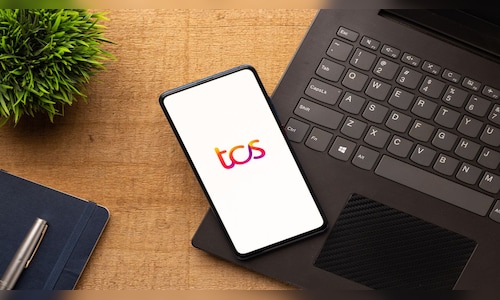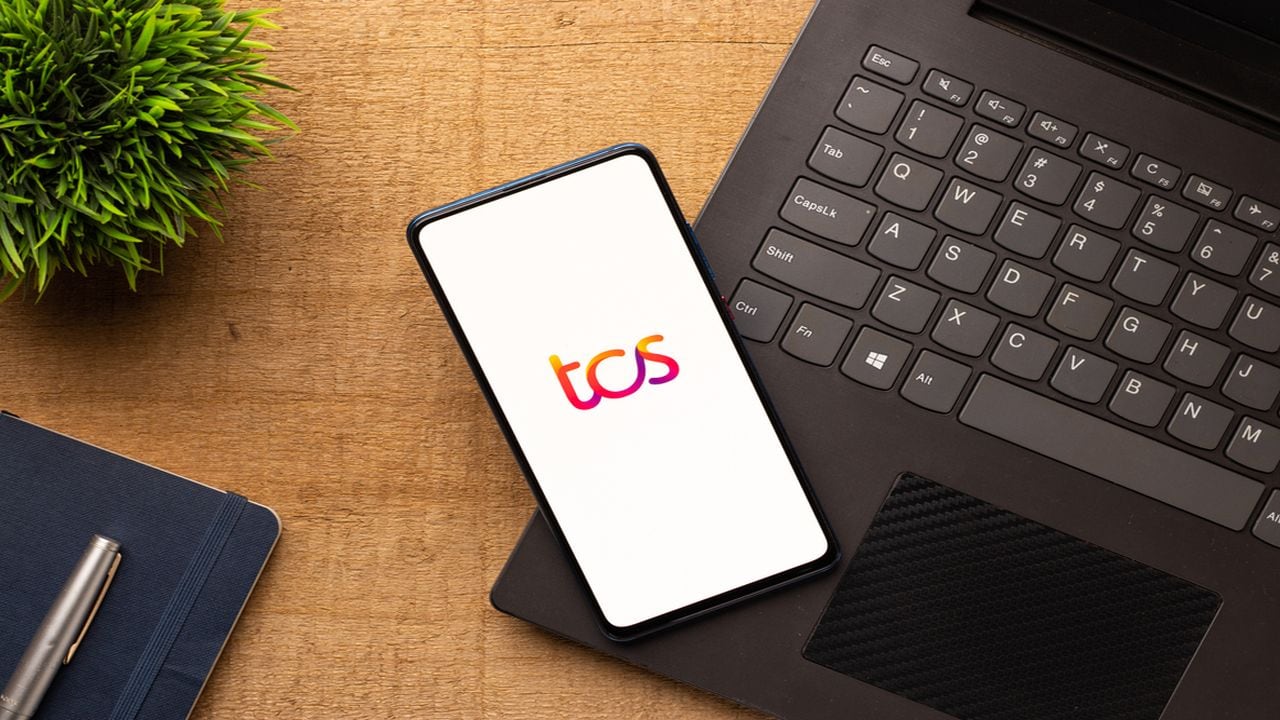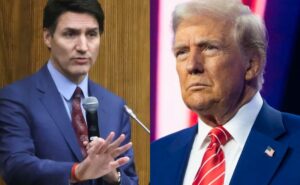

“We are seeing discretionary spending picking up in banking and retail. One segment that we will wait and watch for would be life sciences and healthcare. Even telecom. As the interest rates go down, telecom would also start seeing some amount of discretionary spend,” Krithivasan said in an interaction with CNBC-TV18 after announcing the third quarter earnings.
TCS‘ Chief Financial Officer Samir Seksaria, and Executive Vice President and Chief Human Resources Officer, Milind Lakkad, also joined in the conversation to share the growth and headcount outlook for the year.
In the October-December 2024, TCS‘ dollar revenue declined more than Street estimates. But the IT major announced its second-highest dividend for 2024-25, taking the total for the year so far to ₹96 per share.
These are the edited excerpts of the interview.
Q: Can you give us update on BSNL order?
Seksaria: The BSNL order, as we called out, was running at its peak in Q2 (July-September 2024). It has remained at similar levels and the execution is going quite strong. 70% of the overall work in terms of installation and commissioning also has been completed. About 60,000 towers are running commercial traffic and as we had called out, we should expect it to run over between Q4 this year (January-March 2025) and Q1 of 2025-26 (April-June 2025).
From a margin perspective, we did have 40 basis point improvement in spite of loss and the Q3 (October-December 2024) seasonality. In spite of that, we had operational efficiencies helping on the margin front, and primarily kick-started by productivity, utilisation.
Q: Was the impact of furloughs more than anticipated, and will furloughs extend into Q4?
Krithivasan: Q3 furloughs were more or less in line with last year. There will be some extension, particularly in Australia, where furloughs tend to go up to the third week of January. Overall furlough is similar to last year.
Q: If furloughs were in line with expectations, your revenues ex-India, which maybe BSNL or other contract has fallen quite significantly. Even BFSI is under pressure quarter-on-quarter. What explains that?
Krithivasan: Furloughs was on expectation, but we did have some one-off issue, last quarter also. We had called about a couple of accounts. They are bottoming out. There were some client specific one-off issues that are bottoming out in Q3. So that also had some role in that. Overall, it’s more or less on what we are expecting for this quarter.
Q: What is this one-off, client-specific issue? Were they the same as what we saw in Q2 healthcare or is it something new?
Krithivasan: We talked about healthcare issue, that was supposed to continue and bottom out in this quarter that is what has happened. There are no fresh ones.
Read Here | TCS Q3 Results: US Dollar revenue declines more than estimates; deal wins back above $10 billion
Q: Once BSNL contract runs out, you will have that hole to fill in that sense, what will be the impact beyond 26 once it starts. You said 70% of the work is done, 30% is left.
Seksaria: The existing contract runs out, we have opportunities. It’s a first of a kind which has been done and there isn’t many players who can execute indigenous network in India, and that should open up further opportunities on a like to like basis. Yes, it needs like a replacement, and it need not be on that we have had in general good order wins in Q3 and yes, it’s part and parcel of the overall thing.
Q: BSNL revenues have peaked in Q3. Do they drop off from Q4?
Seksaria: It is likely to drop off.
Q: Can you explain what led to the margin improvement despite no growth?
Seksaria: The furloughs were the headwinds, and from a tailwinds perspective, it was purely operational efficiency led by productivity, better utilisation and also the right sizing on pyramid.
Q: Can we expect margins to improve from Q4 onwards given the rupee depreciation, and the BSNL contract is waning now?
Seksaria: We would want to inch up and get closer to 26% as early as possible. The ones which I talked about operational efficiency levers do provide additional headwinds in the short term, and we will be banking on them here. I have always been calling out pricing and product mix also is something which we could look at in a medium to long term.
Q: Will Q4 exit margins be closer to 25?
Seksaria: We will like to get to closer 26%.
Q: There is no change in 26-28% guidance, right?
Seksaria: 26-28% remains.
Q: What is driving the deals, is it cost optimisation? What kind of work is leading up to this big number?
Krithivasan: We have started seeing some amount of improvement in decision making around discretionary project. It is not purely cost optimisation. One of the interesting areas we see is tech modernisation is picking up and in run up to leveraging there is more work around data that’s picking up. Data, cloud, tech modernisation, three important levers, apart from cost optimisation levers around operational model transformation.
Q: Has the momentum picked up in North America? You said there are visible signs of some improvement on the discretionary side.
Krithivasan: We are seeing some improvement on discretionary spend. In fact, one interesting observation we had this quarter is deal cycle has shrunk by few weeks, which is also important, which means that more decisions are being taken. There are definitely positive signs for the future. As long as something unforeseen doesn’t happen, we are quite positive.
Q: In which verticals is discretionary spending picking up?
Krithivasan: We see in banking and retail. One segment that we will wait and watch would be life sciences and healthcare. Even telecom. As the interest rates go down, telecom also would start seeing some amount of discretionary spend.
Q: Do you expect discretionary spending to be more broad based from Q4 onward?
Krithivasan
: I would expect it to go beyond the BFSI and retail. From a CY25 (calendar year 2025) to CY26 (calendar year 2026) perspective we are definitely more positive on CY26 at this time.
Read Here | TCS plans to hire over 40,000 trainees next year, says US visa dependence is not significant
Q: Give us some highlights on the head counts this quarter?
Lakkad: Head count in this quarter has gone down. We have been 11,000 plus net addition in the last two quarters. This quarter, because of various aspects. We make these calls not just for a quarter, but through the year in terms of how we want to add people every quarter. And that’s how it ended up being for reasons of productivity utilisation pyramid, at a negative head count.
I can say that we are on track to hire 40,000 trainees this year. All of that is a very positive trend, and planning to do more than 40,000 next year.
Q: And what led to the jump in attrition to 13%?
Lakkad: It is minor changes here and there and I am not much worried about that. There is no specific place where I can point a finger at but this is something which is within our comfort band.
Q: Is attrition on a rising trend?
Lakkad: No. Overall, I see reduction in attrition in the coming quarters. LTM numbers may show otherwise, because the way it is calculated, but otherwise, quarterly attritions may come down.
Q: What is your perspective on H-1B? Is it an issue which is likely to persist?
Lakkad: There are many things we are dealing with. This is not the one which is the top of my mind because we have a global operating model and global workforce. We have been hiring people across all locations.
Q: What is your dependence on US Visas?
Lakkad: It has reduced over a period of time
Krithivasan: Our US visa dependence is not very significant. We have changed our model, with more than 50% local workforce in US.
Lakkad: We have seen this before. It is not the first time it’s happening. Our model is very robust in terms of dealing with this.
Q: What about tariffs on services?
Seksaria: It is a wait-and-watch and too early to call out. We will be prepared for it. It would be an industry-wide thing.
Krithivasan: We can look at multiple scenarios, but we have to readjust and recalibrate, as and when something happens.
Q: How is the pipeline after strong deal wins that you have seen?
Krithivasan: The pipeline is still quite good, particularly in North America. It is an increasing pipeline. Despite the strong deal wins across almost all industry verticals, we find the pipeline to be strong.
Q: Is it pretty much at similar levels as Q2 pipeline, or has it expanded?
Krithivasan: Because there is a much higher TCV win, there is a marginal dip at the overall level. But a key market level, we are good.
Q: And the AI (Artificial Intelligence), and gen AI (Generative AI) pipeline?
Krithivasan: It continues to be very strong, like we stopped publishing those numbers because it’s becoming more commonplace. There are so many AI projects happening, so the focus now is to improve the level. Previously, we did a lot of smaller and simpler projects. More projects are going into production. Now we are looking into more complex projects. So the numbers don’t matter too much anymore.
Q: Three sectors you have spoken about in the past that look a little challenging are: manufacturing, telecom, life sciences. What’s the update?
Krithivasan: Life sciences is subject to the US policy decisions around insurance and health care. We are more on a wait-and-watch mode on what happens. Telecom, I am more positive, because as the interest rates go down, that is a very capex heavy industry. So as the interest rate goes down, more discretionary spend should happen. Manufacturing, from whatever I am hearing from next fiscal year, things should look good. I don’t want to comment on immediate quarter, but there also you see, traditional auto sales are picking up. So industry is in some sort of a flux. But we believe from our Q1 onwards thing should improve for manufacturing.
Q: In US, one is not sure whether those interest rate cuts will happen, because growth is expected to be strong, but at the margin does it makes you more positive?
Krithivasan: Overall, as we have said, we are quite positive.
Q: And UK and Europe?
Krithivasan: From a market side, their GDP is expected to improve, not significantly though. Particularly in the UK, what I am hearing is government spending may go up, which can boost the overall spend in the economy. Europe also consumer confidence is better. So, overall, our current sentiment is more positive on CY25.
Q: Do you think FY26 will be better than FY25?
Krithivasan: It should be.
Q: And client budgets have closed?
Krithivasan: I won’t say it is closed, but based on the initial conversation with our teams, at least the budgets have a positive upward bias.
Also Read | TCS shares jump 4% on optimistic management commentary; check latest price targets



